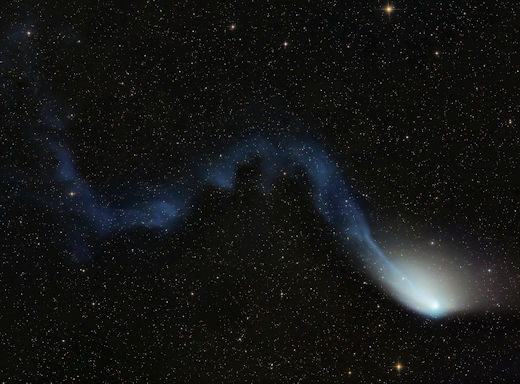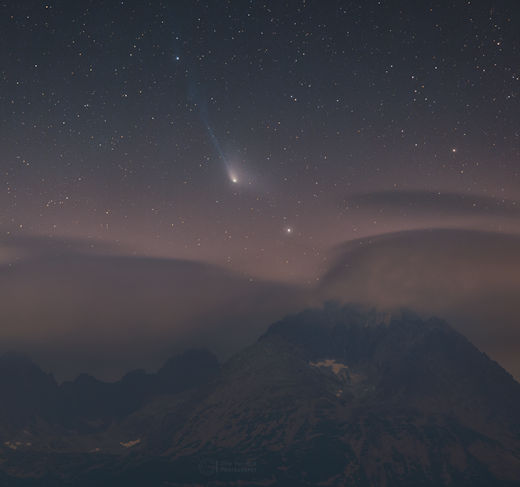
A gust of solar wind hit it. Don Bartlett of June Lake, California, photographed 13P/Olbers on the 4th of July and found its tail twisted into a corkscrew shape. "The #sun is having #fun with this #comet," he says.
"I've imaged 13P every night since June 22nd, without a hiccup, and this comet changes nightly," says Bartlett.
The reason: Solar activity. Comet Olbers is making its closest approach to the sun in 69 years. Falling inward from the outer solar system, it has arrived just in time for Solar Max. CMEs and other gusts of solar wind are buffeting the comet daily, causing its tail to shape-shift in interesting ways.
48 hours later in Slovakia, astronomer Petr Horálek saw the same curlicues rippling downstream:

"On July 6th, I was lucky to capture its beautiful tail while the comet was moving over cloudy Gerlachovsky Peak, the highest peak of Slovakia located in the High Tatras mountains," says Horálek.
"If you want to see this comet and you are located in the Northern Hemisphere, try your luck in the upcoming days before the Moon becomes too bright again," he advises. "After sunset, the comet may be found low over the northwest horizon beneath the constellation #UrsaMajor. "
The comet is magnitude +6.8, too dim for the naked eye, but an easy target for backyard telescopes.
